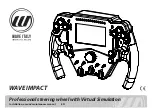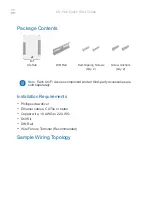
Cleaning Information
General Cleaning Procedure
150
Agilent
8169A
Polarization Controller, Second Edition
You should only clean instruments with a fixed connector interface when it
is absolutely necessary. This is because it is difficult to remove any used
alcohol or filaments from the input of the optical block.
It is important, therefore, to keep dust caps on the equipment at all times,
except when your optical device is in use.
If you do discover filaments or particles, the only way to clean a fixed
connector interface and the input of the optical block is to use compressed
air.
If there are fluids or fat in the connector, please refer the instrument to the
skilled personnel of Agilent’s service team.
How to clean instruments with a physical contact interface
Remove any connector interfaces from the optical output of the instrument
before you begin the cleaning procedure.
Cleaning interfaces is difficult as the core diameter of a single mode fiber
is only about 9 mm. This generally means you cannot see streaks or
scratches on the surface. To be certain of the degree of pollution on the
surface of your interface and to check whether it has been removed after
cleaning, you need a microscope.
Both the surface and the jacket of the attached connector should be completely dry and
clean.
N O T E
Only use clean, dry compressed air. Make sure that the air is free of
dust, water, and oil. If the air that you use is not clean and dry, this
can lead to filmy deposits or scratches on the surface of your
connector interface. This will degrade the performance of your
transmission system.
Never try to open the instrument and clean the optical block by
yourself, because it is easy to scratch optical components, and
cause them to become misaligned.
C A U T I O N
Never look into an optical output, because this can seriously
damage your eyesight.
WA RN I N G
















































